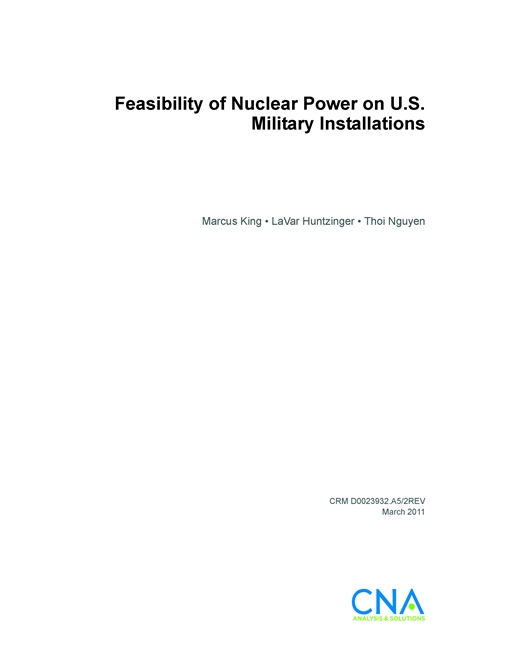The commercialization of smaller nuclear plants that provide competitively priced electricity with reduced capital costs and that allow for smaller incremental additions of new generating capacity can greatly enhance the affordability of nuclear power and offer opportunities to introduce nuclear power to a broader spectrum of domestic and international customers. Interest in SMRs has grown dramatically among both small and large utilities in the United States as they begin to anticipate the need for new generating capacity, especially from clean energy sources, and the need to replace the older fossil-fueled plants.
Several U.S.-based and foreign companies are seeking to bring new SMR designs to market, including some with the potential for deployment within the next decade. Some of these designs use well-established light-water coolant technology to the fullest extent possible in order to shorten the timeline for initial deployment. Since light-water reactor (LWR) technology is widely in use around the world, the research needed for these new designs is minimal. However, these designs are fundamentally different from large traditional plants because they arrange the primary system components in a much more integrated and compact configuration, and make extensive use of passive safety systems. Some designs use natural circulation of coolant water during normal operation, which further simplifies the number of components and systems required, but which behaves differently from
forced circulation systems. Examples of new technology features and components include the use of an integrated primary system reactor configuration, internal control-rod drive mechanisms, and helical coil steam generators. New features and components used in these designs will need to be demonstrated before being licensed by the Nuclear Regulatory Commission (NRC). Additionally, a new business model based on the economy-of-replication and factory fabrication of the primary system being proposed by SMR vendors will need to be demonstrated before gaining the confidence of potential investors.
Beyond these near-commercial designs, advanced SMR concepts offer a number of further opportunities to expand nuclear power to an even broader base of customers. For example, small liquid-metal cooled concepts have been proposed that could provide power to remote communities without the need to refuel the reactor for 20-30 years (i.e., they would operate for the lifetime of the plant on a single fuel loading). Similar SMR concepts also appear to provide an inherent ability to respond to variations in the electric grid load, thus making them well suited for deployment where grids are less stable or have anticipated variability due to intermittent power generators such as wind turbines or solar arrays. Small high-temperature reactors also hold considerable promise to provide energy with high efficiency conversion of heat to electricity and the potential for dramatically reduced impact on local water supplies, thus making nuclear power viable to customers in arid regions. Extensive technology research and development will be needed to bring these concepts to commercialization, especially in the areas of long-lived fuels, high-temperature and radiation-resistant materials, and advanced sensors and instrumentation.
In its FY 2011 budget, DOE proposed to support cost-shared partnerships with industry to bring near-commercial SMR designs to market. These SMRs have not been fully designed, licensed, or built, and as such, will require varying amounts of research and development that depend on the maturity level of the technology employed and the ambitiousness of the performance goals.
Download reportApproved for Public Release. Specific authority: N00014-05-D-0500.
Details
- Pages: 98
- Document Number: CRM D0023932.A5/2REV
- Publication Date: 3/1/2011
